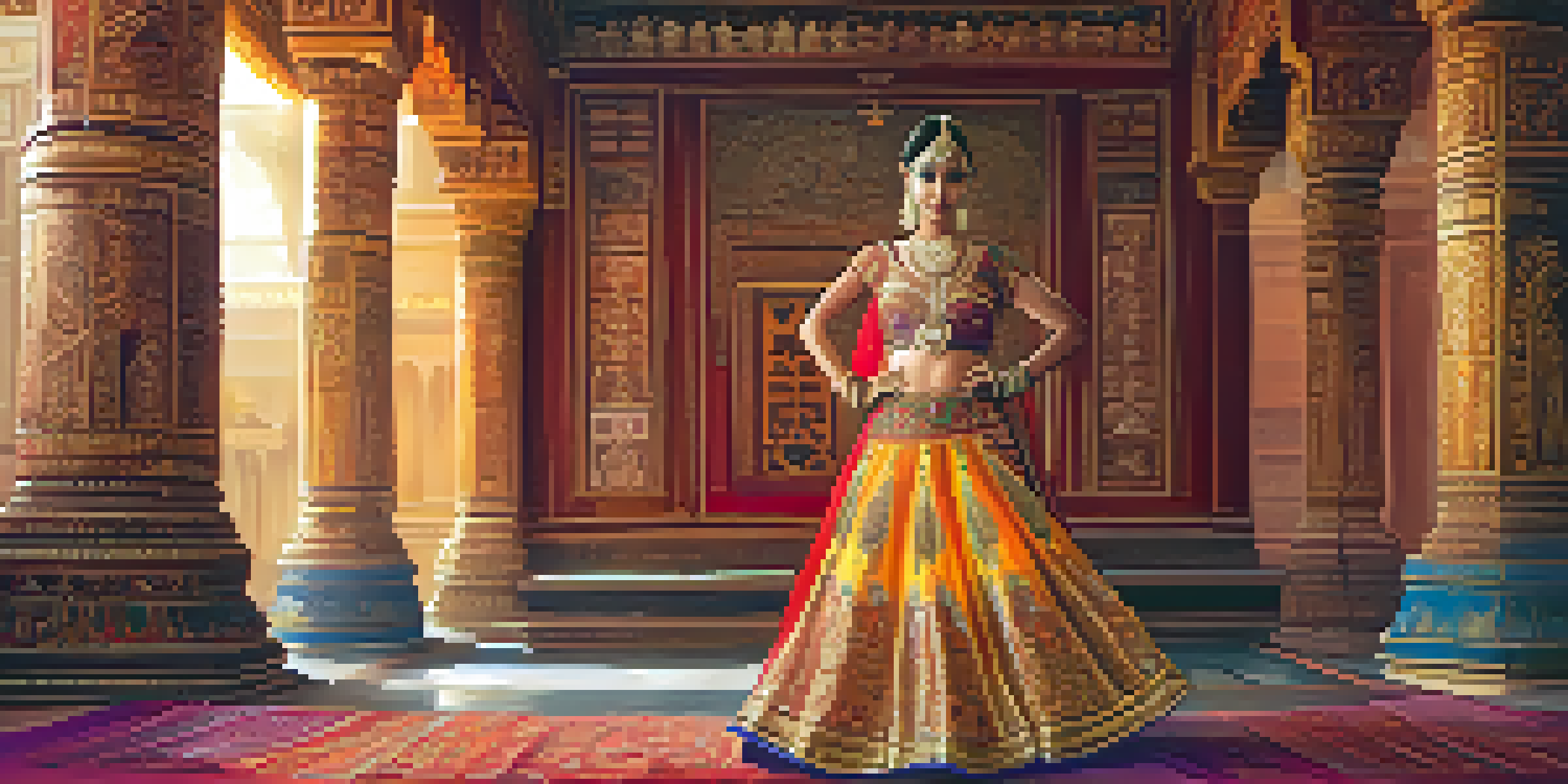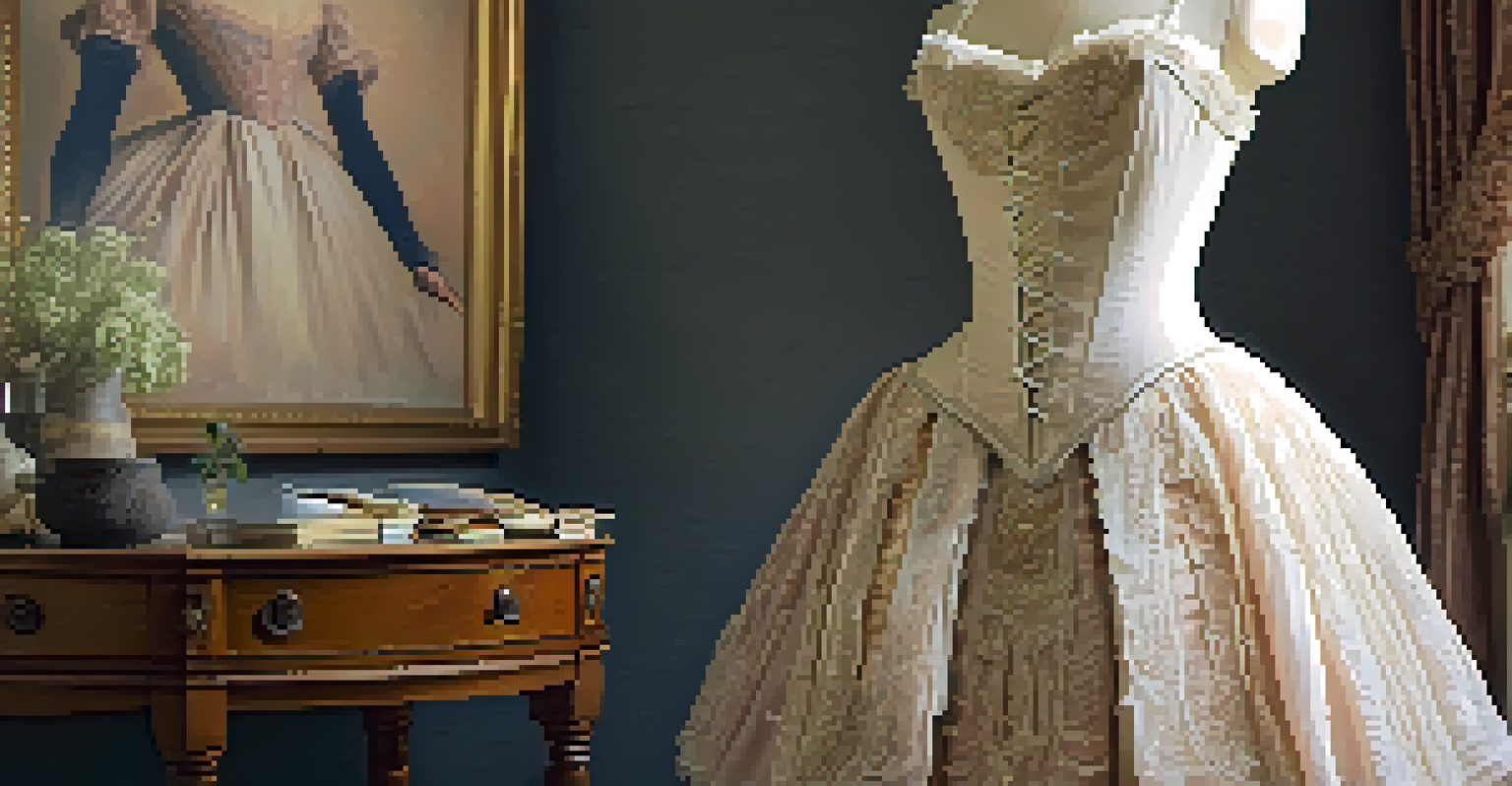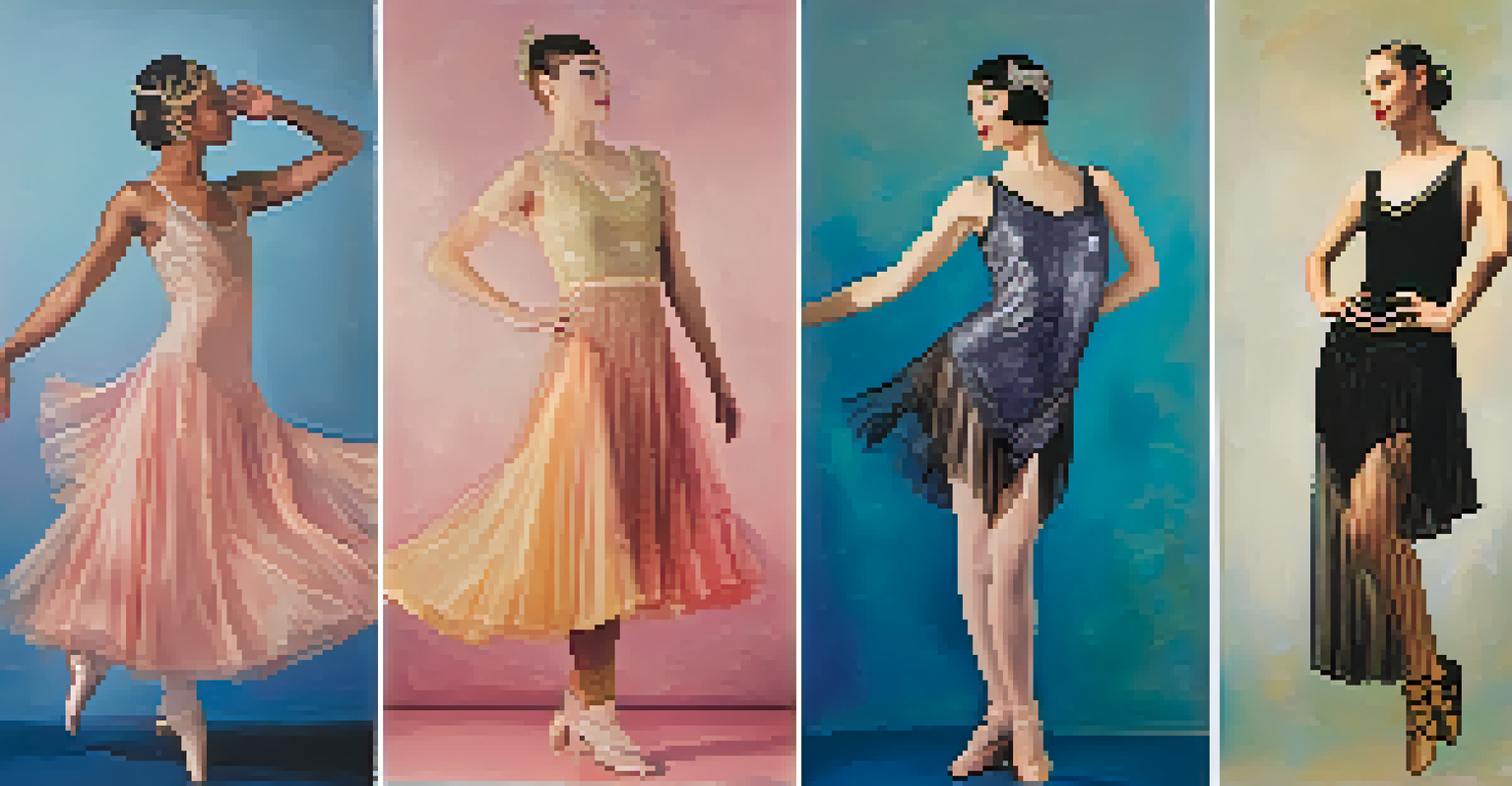The Importance of Historical Accuracy in Dance Costumes

Understanding Historical Accuracy in Dance Costumes
Historical accuracy in dance costumes refers to the faithful representation of clothing from a specific time period. This means that every stitch, fabric choice, and design detail should align with the historical context of the performance. When dancers wear costumes that accurately reflect the era, it enhances the authenticity of the performance and transports the audience back in time.
Dance is the hidden language of the soul.
Dance is not just about movement; it’s also a narrative art form. Costumes play a crucial role in conveying the story, setting, and emotions of the piece. Therefore, choosing costumes that are historically accurate helps to create a more immersive experience for the audience, allowing them to truly connect with the performance.
Moreover, historical accuracy in costumes can educate audiences about different cultures and eras. For example, a ballet set in the Victorian era can reveal insights into the social norms and fashion trends of that time. This not only enriches the viewing experience but also fosters a greater appreciation for history and the evolution of dance.
The Role of Research in Costume Design
Research is the backbone of creating historically accurate dance costumes. Designers must delve into historical records, paintings, and photographs to understand the intricacies of clothing from the chosen era. This meticulous process ensures that every detail—from the cut of a dress to the type of accessories used—is true to history.

Incorporating research into costume design not only guarantees accuracy but also enhances creativity. Designers can find inspiration in the details of historical garments, leading to innovative interpretations that honor the past while adding a contemporary twist. This balance between authenticity and creativity is what can make a dance performance truly special.
Historical Accuracy Enhances Performance
Accurate costumes transport audiences to a specific time period, enriching the authenticity and emotional connection of the dance.
Furthermore, the process of research fosters collaboration between historians, costume designers, and choreographers. This teamwork can lead to richer storytelling, as each party brings their expertise to the table, ensuring that the final product resonates with both historical significance and artistic expression.
Impact on Audience Engagement and Experience
When audiences are presented with historically accurate costumes, their engagement with the performance deepens. The visuals tell a story that complements the dance, allowing viewers to feel the weight of history while watching the performers. This connection can be particularly powerful in genres like ballet, where the storytelling is often subtle yet profound.
The clothes make the man. Naked people have little or no influence on society.
Imagine watching a performance set in ancient Greece with costumes that perfectly reflect the draping of a peplos or chiton. Such details can spark curiosity and interest in the historical period being represented, prompting audiences to explore and learn more about the culture. This educational aspect elevates the dance experience beyond mere entertainment.
Ultimately, historical accuracy in costumes serves as a bridge between the past and present, inviting audiences to reflect on how history shapes our current world. Engaged audiences are more likely to appreciate the nuances of the performance, leading to a more memorable experience overall.
Costume Accuracy and Cultural Representation
Cultural representation in dance is crucial, and costumes play a significant role in this representation. Accurate costumes help to honor and showcase the traditions of different cultures, allowing for a more respectful portrayal in performances. This is particularly important in dance styles that are deeply rooted in cultural heritage, such as Indian classical dance or African tribal dance.
When costumes reflect the true essence of a culture, they can empower performers and provide authenticity to their expression. Dancers can embody their characters more fully when their attire resonates with the cultural narratives being told. This authenticity can inspire pride in the performers and educate audiences about the richness of diverse traditions.
Research Fuels Creative Costume Design
Thorough research allows designers to honor historical garments while inspiring innovative interpretations that resonate with modern audiences.
Moreover, culturally accurate costumes can help combat stereotypes and misconceptions that may arise through misrepresentation. By presenting costumes that reflect the true history and significance of a culture, dance companies can foster understanding and appreciation among audiences, paving the way for greater cultural dialogue.
Challenges in Achieving Historical Accuracy
While striving for historical accuracy in dance costumes is important, it can also be quite challenging. One major hurdle is the availability of materials and resources that accurately reflect historical designs. Many fabrics and garment styles may be difficult to replicate with modern resources, making authenticity a tricky pursuit.
Additionally, the interpretation of historical garments can vary based on different scholarly perspectives. This can lead to debates among designers and historians about what constitutes 'accurate' representation. Balancing differing opinions while staying true to a cohesive vision can be a daunting task for costume designers.
Moreover, financial constraints often limit the extent to which companies can invest in research and materials. As a result, some productions may opt for shortcuts that compromise historical accuracy. This highlights the ongoing need for funding and support for projects dedicated to preserving the integrity of historical representation in the performing arts.
The Evolution of Dance Costumes Over Time
Dance costumes have evolved dramatically over the centuries, reflecting changes in fashion, culture, and societal norms. Each era brings its unique style, and understanding these evolutions is essential for achieving historical accuracy. For example, the transition from the voluminous skirts of the Romantic ballet era to the sleek, modern lines of contemporary dance showcases how much costume design can shift over time.
This evolution also influences how dancers interpret their roles. As styles change, so do the movements and expressions associated with those costumes. A dancer in a corseted gown may embody different physicality than one in a flowing, modern outfit, showcasing the interaction between costume and choreography.
Cultural Representation Through Costumes
Costumes that reflect true cultural narratives empower performers and educate audiences, fostering appreciation and understanding of diverse traditions.
By studying the evolution of dance costumes, designers can create works that not only honor the past but also reflect contemporary sensibilities. This ongoing dialogue between history and modernity enriches the art form and allows for continuous innovation within the realm of dance.
Conclusion: Preserving the Integrity of Dance Costumes
In conclusion, the importance of historical accuracy in dance costumes cannot be overstated. These costumes are not just clothing; they are vital components of storytelling that connect audiences to the past. When executed thoughtfully, they elevate performances and foster a deeper appreciation for the art of dance.
As we move forward, it’s essential to continue prioritizing research, collaboration, and cultural sensitivity in costume design. By doing so, we can ensure that future generations of dancers and audiences experience the richness of history embodied in their performances.

Ultimately, preserving the integrity of dance costumes serves as a reminder of the deep-rooted traditions that have shaped our artistic landscape. It invites us all to celebrate the beauty of dance while honoring the historical narratives that inform its evolution.